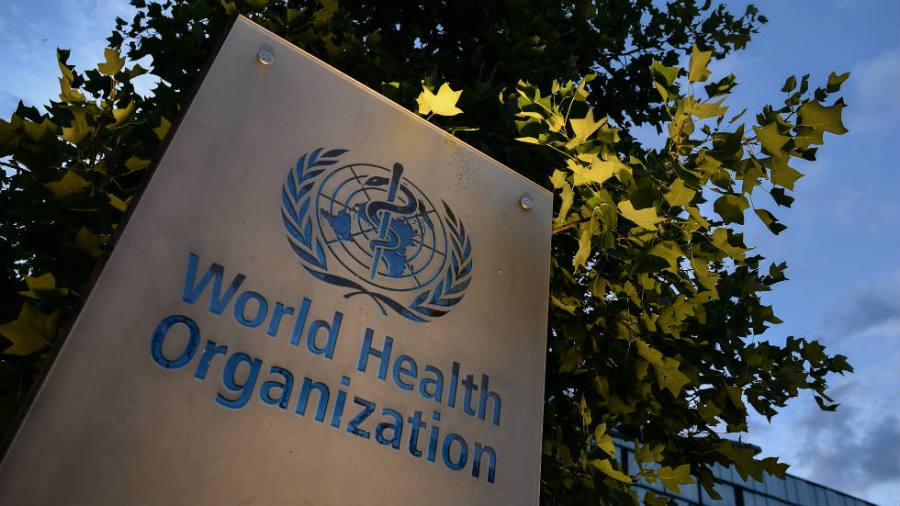Why a final answer on COVID-19’s origins remains out of reach

The Department of Energy’s recent conclusion that COVID-19 likely originated from a Chinese research lab has reignited debate over whether the pandemic occurred naturally or was the result of a human error.
Republican backers of the “lab leak” theory have claimed vindication, yet the intelligence and scientific communities remain torn over the question.
The origins of previous viral outbreaks have been determined with a high level of certainty, but there’s no guarantee that will happen with COVID-19.
Factors like time and a lack of data — largely due to China’s reluctance to cooperate in investigations — may mean we never reach a definite answer to where COVID-19 originated from.
Here is a breakdown of the current debate over COVID-19’s origins:
Lab-leak theory

This undated electron microscope image made available by the U.S. National Institutes of Health in February 2020 shows the Novel Coronavirus SARS-CoV-2. (NIAID-RML via AP)
The Energy Department is not the first federal agency to put its weight behind the lab-leak theory. The FBI said in 2021 it has “moderate” confidence that the pandemic originated from a lab-related incident.
A consensus among the federal government has not been reached, however, with four unnamed federal agencies concluding with low confidence that COVID-19 originated from natural exposure.
The argument that SARS-CoV-2 originated from a research lab hinges on the potential that gain-of-function research being conducted at the Wuhan Institute of Virology resulted in an enhanced coronavirus that was released into the public due to an error or lapse in proper procedure.
Gain-of-function research involves enhancing a pathogen’s ability to cause infection in order to understand its potential to cause outbreaks. The U.S. previously had a moratorium of gain-of-function research until it was lifted in 2018.
Proponents of this theory argue that it cannot be a coincidence that the COVID-19 outbreak began so close to where the Wuhan institute is located. Comedian Jon Stewart made this case in a widely shared appearance on “The Late Show with Stephen Colbert.”
The World Health Organization (WHO) noted in its report into the possible origins of COVID-19 that the Wuhan lab had moved to a new location around the time COVID-19 was first detected, introducing the possibility that disruptions and errors occurred during the process.
And there are precedents for viruses escaping from labs and causing outbreaks, albeit none on the scale that COVID-19 has reached.
In 1978, photographer Janet Parker was accidentally exposed to a strain of smallpox grown in a Birmingham, England, lab, becoming the last recorded person to die from the disease.
Researchers have speculated the 1977 “Russian flu” pandemic was the result of a laboratory incident involving vaccine research.
The Energy Department has not disclosed what evidence was gathered that informed its conclusion.
“I would suspect the types of evidence you would be looking for would be what types of viral strains, what coronavirus strains were being worked on in the Wuhan Institute of virology and how close were they to SARS-CoV-2? Was there anything there that could be considered a precursor for SARS-CoV-2?” Amesh Adalja, senior scholar at the Johns Hopkins Center for Health Security, told The Hill.
Opponents of the lab-leak theory argue that no evidence has been uncovered so far that a virus or a combination of viruses with genomes similar to COVID-19 were being researched at any labs around the time the pandemic began. The WHO considers the lab-leak theory to be highly unlikely, but concedes further information is needed.
Natural origins theory

(Getty Images)
Supporters of the natural origin argument point out that major previous viral outbreaks have been linked to zoonotic transmission, in which viruses jump from animals to humans.
Researchers in China have traced back the SARS outbreak of 2003 to horseshoe bats living in a remote cave in the Yunnan province, identifying viral strains in the animals that contained the building blocks for the virus that caused the epidemic.
The MERS virus that was first identified in Saudi Arabia in 2012 was found to have been transmitted to humans from infected camels.
Both of these viruses are in the coronavirus family like SARS-CoV-2.
William Schaffner, a professor in the division of infectious diseases at the Vanderbilt University School of Medicine, said the molecular biologists he has met with have generally leaned toward the natural origin theory.
“I haven’t done a survey, obviously, but listening to my colleagues discuss this and listening to various presentations at local and national meetings, I think the general inclination of the academic community is to think that this is natural. This was a natural phenomenon, but they have an open mind about laboratory accidents,” Schaffner said.
Schaffner further noted that the Energy Department’s conclusion was reportedly made with a “low” degree of confidence.
“I interpret that as a close call. We really don’t know if it’s 51 on one side, 49 on the other. And so it’s not a ringing affirmation. It’s not a solid conclusion,” he said.
The WHO’s origin report found that viruses with a “high genetic similarity” to SARS-CoV-2 have been found in samples taken from bats in China, Japan, Thailand and Cambodia. Researchers have also proposed potential zoonotic transmission from pangolins or minks.
Critics of the natural origins view have pointed out, however, that regular human contact between animals like bats and pangolins is relatively rare, and the WHO noted that detailed analyses have indicated decades of evolutionary space between COVID-19 and the genetically similar viruses detected among bats.
Why the answer is still far away

Dr. Anthony Fauci on November 22, 2022. (Greg Nash)
A consensus on the origins of COVID-19 is unlikely to be made any time soon as most stakeholders agree that additional data is still needed to solidify a conclusion — and that would require the cooperation of the Chinese government.
Beijing has routinely been criticized throughout the pandemic for failing to provide access and data to investigators. The WHO recently halted its probe into COVID-19’s origins, citing challenges with conducting studies in China.
The Office of the Director of National Intelligence previously said in a report, “China’s cooperation most likely would be needed to reach a conclusive assessment of the origins of COVID-19. Beijing, however, continues to hinder the global investigation, resist sharing information, and blame other countries, including the United States.”
Former chief White House medical adviser Anthony Fauci concurred with this assessment in an interview with The Boston Globe, telling the outlet that “cooperation and collaboration” from Chinese authorities would go a long way towards determining COVID-19’s origins.
He added of COVID-19’s true origin: “We may not ever know.”
Shortly after the Energy Department’s conclusion was reported, Chinese officials pushed back against renewed criticisms, with Foreign Ministry Spokesperson Mao Ning saying her government has been “open and transparent” on the issue.
Experts, however, are less than convinced about the potential for collaboration.
“I think people are right to be pessimistic about actually getting to the bottom of this because it’s going to require cooperation and transparency from a government that flourishes in opaqueness and not being transparent,” Adalja said.
Along with a need for more information, the more time that passes, the less likely it is that a source can be pinpointed. Evidence becomes harder to find, recollections become hazier and stakeholders are less likely to engage.
If one theory does prevail, the consequences could be significant.
Adalja said the implications of a lab-leak origin would cause geopolitical waves, but would not be as significant from a biological standpoint.
“If it comes from a lab, we have to understand how there were biosafety breaches and how to do that kind of research more safely,” said Adalja. “If it has an animal origin, we have to understand what animal that was and how do we modify our behavior in order to make that animal less likely to transmit infections to us.”
“From a biological or pandemic preparedness perspective, either arm of that has implications.”
Copyright 2024 Nexstar Media Inc. All rights reserved. This material may not be published, broadcast, rewritten, or redistributed..















